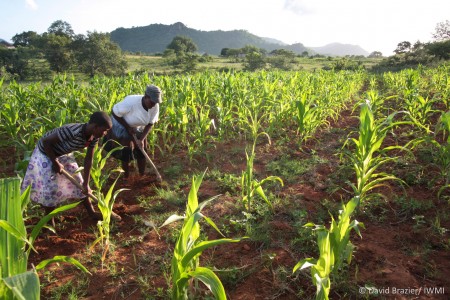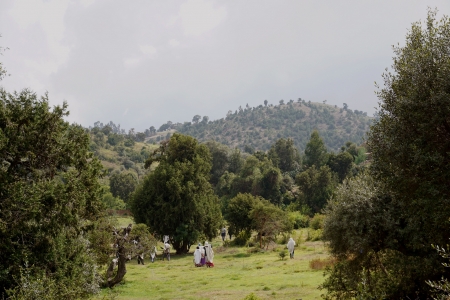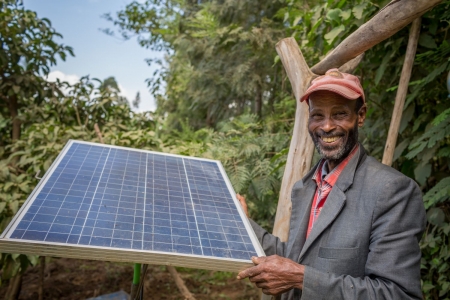With Ethiopia and the world working towards improved Sustainable Land Management (SLM), global experts met in Addis Ababa and recommended a move towards stronger landscape solutions and better demonstration of the benefits of SLM for livelihoods.
The 19th WOCAT Network Meeting in Ethiopia on 15-16 May 2019 focused on how to up- and out-scale Sustainable Land Management (SLM) while achieving Land Degradation Neutrality (LDN). WOCAT – a global network of SLM experts – brought members together to share achievements and challenges, and guide future strategies. The CGIAR Research Program on Water, Land and Ecosystems and partner CIAT contributed sponsorship and key expertise.
SLM includes a range of approaches and technologies that ensure humans use soils, water, animals and plants with ecosystem health and future livelihoods in mind. These range from broader approaches such as participatory management, to physical technologies such as building small dams or terraces, restoring gullies, or improving livestock grazing practices.
Based on the week’s discussions participants outlined a variety of recommendations for the future of SLM, including:
- Landscape solutions with combinations of different practices have not sufficiently been explored so far. Even though the challenges are demanding due to complexity and context specificity, there needs to be stronger focus on landscapes and transboundary contexts - not only between but also within countries – as well as on land use planning, integrating all relevant sectors and actors, taking into account multiple claims on land.
- The inclusion of onsite and offsite impacts (such as for example floods and water scarcity) into SLM strategies offers great opportunities to advance the recognition of SLM at different levels, as it demonstrates that not only the rural population but also urban and peri-urban people highly depend on good land management. Accordingly, more emphasis should be put on the link of water to land management.
- Migration of the young generation to urban centres represents an enormous challenge for the agricultural systems in more remote and rural regions and for the implementation of SLM. It also leads to the feminisation of agriculture, thus placing an additional burden on women who often lack equal access to resources or participation in local decision-making. Therefore, we need to foster innovations in land management that offer better opportunities for the youth and women.
- The sector needs to strengthen its practical relevance on the ground, demonstrating the added value and benefits of SLM for livelihoods. It should put focus on the socio-economic aspects and impacts of SLM at household, farm and landscape level to provide evidence for scaling out and adoption of good land management at large scale.
- The community should strengthen further evidence-based decision-making for SLM and to support it by updating and expanding the WOCAT database – including Ethiopia’s EthioCAT – on best practices, and by providing and further developing proven decision support tools, methods and approaches. Capacity building efforts to this end should be continued while adapting tools and methods to specific contexts and addressing newly emerging developments.
- WOCAT and practitioners should continue to produce SLM knowledge products that support awareness raising and capacity building on SLM and prove what is at stake in very different contexts if land management is not taken as key priority.
For presentations and other material from the WOCAT Symposium and WOCAT Network Meeting in Addis Ababa see the Symposium resource page. And read more on the WOCAT event blog.





